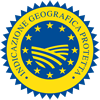Description
The Vermut di Torino PGI or Vermouth di Torino PGI refers to the aromatised wine obtained from one or more Italian wine products, with the addition of alcohol, mainly aromatised with Artemisia spp (Artemisia absinthium and/or Pontica), together with other herbs, spices and possible flavouring substances. Vermut di Torino PGI or Vermouth di Torino PGI is commercially classified into four categories: Dry, White, Amber and Red.
Production Area
The production area of Vermut di Torino PGI is within the entire territory of the Piedmont region.
Production Method
Many of the aromatic herbs historically used in the production of Vermut di Torino PGI are widespread in the Piedmont region, as is the characteristic ingredient Artemisia spp (Artemisia absinthium and/or Pontica), also known as absinthe. The aromatic substances can be extracted using water, hydroalcoholic solutions, wine, or alcohol as a base, either individually or combined. Only the following is permitted for sweetening: sugar (factory-made, white, refined white, liquid, inverted liquid, inverted sugar syrup); grape must (including concentrated and rectified concentrate); caramelised sugar (obtained exclusively by the controlled heating of sucrose, without the addition of bases, mineral acids or other chemical additives); honey. Vermut di Torino PGI can only be coloured with caramel.
Appearance and Flavour
Vermut di Torino PGI is characterized by an intense aroma that is extremely aromatic, balsamic, floral or spicy; it has a mellow flavour, with a balance of sweetness, which varies according to the different types of sugars, and bitterness, given to the aromatic characteristics of Artemisia. The alcoholic strength of Vermut di Torino PGI must be between 16 and 22% vol.
History
At the end of the eighteenth century, making this aromatised wine was a true art in Turin and other neighbouring towns, and gave rise to master artisan “vermuttieri” (vermouth makers), thanks to whom Turinese vermouth was diffused internationally. Between 1700 and 1800, Piedmont – which belonged to the hereditary states of the House of Savoy – was known for its gastronomic excellence. Thanks to courageous Piedmontese entrepreneurs, vermouth stared being exported all over the world in the first half of the nineteenth century.
Gastronomy
Vermut di Torino PGI was first produced as an aperitif at the end of the eighteenth century, and is still an extremely popular pre dinner drink today. Once consumed for its medicinal value, it is now considered an enjoyable drink, both as an indispensable ingredient in the very best cocktails – Negroni, Martini and Manhattan, to mention but three – or mixed with soda as an aperitif. Drinking it “pure” has recently made a comeback, either cold or on the rocks, garnished with a lemon or orange twist. It is also excellent for flavouring desserts, not to mention risottos and main courses.
Marketing
The product is marketed in the following types: Vermut di Torino PGI or Vermouth di Torino PGI extra secco or extra dry (less than 30 g/l of sugar); Vermut di Torino PGI or Vermouth di Torino PGI secco or dry (less than 50 g/l); Vermut di Torino PGI or Vermouth di Torino PGI sweet (sugars equal to or greater than 130 g/l); Vermut di Torino PGI or Vermouth di Torino PGI Superiore (alcoholic strength of no less than 17% vol., made with at least 50% of Piedmontese wines and aromatised with herbs – other than absinth – grown or harvested in Piedmont). Vermut di Torino PGI or Vermouth di Torino PGI is sold in glass bottles with the following capacities: 50- 375-500-750 ml and 1-1.5-3 l, unless otherwise provided for by the regulations of the importing countries. The bottles cannot be sealed with a crown cap.
Distinctive Features
The quality of the wine used and the producer’s skills are fundamental for the production of a good Vermut di Torino PGI: the white or red wine must have good structure and acidity to support the aromas and balance the sugar, while production skills are essential to blending and balancing the many different botanical elements perfectly with the wine.






